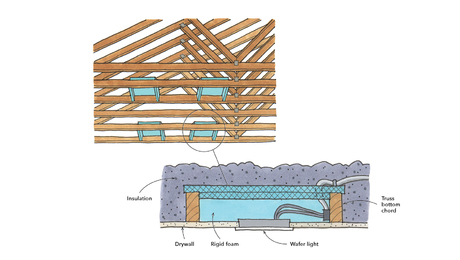Q:
I am building a house in Michigan and don’t know whether to use housewrap. I plan to use oriented-strand-board sheathing, vinyl siding, and blown-in cellulose insulation. Is this an instance where you wouldn’t use housewrap at all?
Anders Gustafson, via email, None
A:
Associate editor Daniel S. Morrison replies: There are some instances when you can get away without housewrap, but your case isn’t one of them. One of the objectives of installing housewrap is to stop infiltrating air, which undermines your house’s thermal boundary and also carries moisture during humid seasons.
Another function of housewrap is to act as a drainage plane to protect wall sheathing from water that gets behind the siding. Vinyl siding doesn’t do a very good job of stopping air or water entirely, so you can count on both air and water breaching your first line of defense. Because of this, you should not omit the housewrap.
Blown-in insulation is a great idea because it (typically) stops air better than batt insulation. But even densely packed cellulose won’t stop pressurized air (such as that from heavy wind or from imbalances due to mechanical equipment like HVAC, mammoth kitchen-range hoods, or clothes dryers).
Could you tape the seams of the wall sheathing to stop the air? Sure, but the tape may not work too well in cold weather, and it’s sometimes hard to install on a muddy job site without getting the sticky side dirty. And then how long will the tape last? Probably not for very long.
The bottom line: Installing the housewrap now is a lot easier than removing the siding a few years down the road to fix moisture problems.
Fine Homebuilding Recommended Products
Fine Homebuilding receives a commission for items purchased through links on this site, including Amazon Associates and other affiliate advertising programs.

Nitrile Work Gloves

Disposable Suit

100-ft. Tape Measure

























